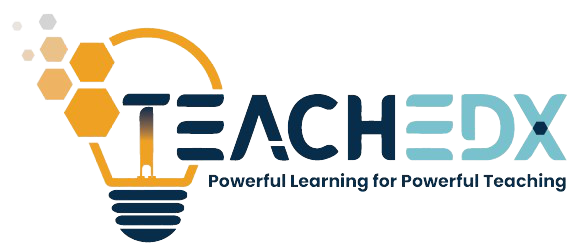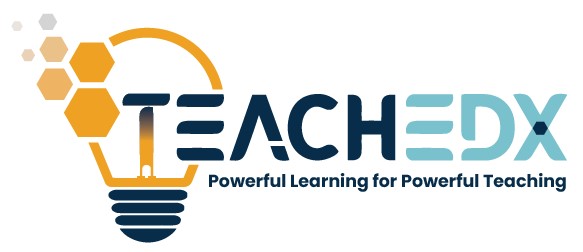Creating a Problem-Based Learning (PBL) Lesson in Mathematics
- Venessa Powell
- February 12, 2024
- No Comments
In this final blog post in my four-part PBL series, I share a lesson planned for a mathematics class. Creating a Problem-Based Learning (PBL) lesson in mathematics requires careful planning and a clear understanding of the desired learning outcomes. Here is a step-by-step guide to help you plan a PBL lesson for mathematics students.
Step 1: Define your objectives
Begin by identifying what you want your students to learn. In Grade 7, typical objectives might include mastering certain algebraic concepts, understanding geometric relationships, or interpreting data. These objectives are usually stated in your curriculum or they may have been drafted by the school’s mathematics department.
Step 2: Choose a Real-World Problem
Select a problem that is meaningful, engaging, and relevant to the students’ lives. The problem should naturally involve the mathematics concepts you aim to cover. For instance, if you’re teaching algebra, you might pose a problem about budgeting for a school event.
Step 3: Prepare the Problem Scenario
Develop a scenario that describes the problem in detail. The scenario should be open-ended, with no single “right” answer, to encourage critical thinking and creativity. Create any necessary materials, such as fake budgets, price lists, or graphs that the students will need to work through the problem.
Step 4: Introduce the Problem to Students
Present the problem to the students in a compelling way. You might tell a story, show a video, or even bring in a guest speaker to help set the scene. Make sure to clarify the task without giving away too much—students should be guided to discover the mathematical concepts on their own.
Step 5: Guide Initial Discussion and Inquiry
Facilitate an initial class discussion to help students understand the problem and begin thinking about how to approach it. Encourage them to ask questions, and guide them to consider what information they might need to solve the problem.
Step 6: Organize students into groups.
Divide the class into small groups for collaborative work. Each group will work together to solve the problem, allowing for peer learning and the sharing of diverse ideas.
Step 7: Research and Investigation
Allow students time to research and gather information. They might need to look up prices, research materials, or learn about mathematical concepts. Be available to provide guidance and resources as needed.
Step 8: Problem Solving
Give the students time to apply their math skills to solve the problem. They should be using the concepts you’ve been teaching to come up with a solution to the real-world issue you’ve presented. Circulate among the groups to monitor their progress and provide support where necessary.
Step 9: Create Presentations
Once the groups have developed their solutions, have them prepare presentations to share their findings with the class. These presentations can take various forms, such as a report, a poster, a slideshow, or a physical model.
Step 10: Share Solutions and Reflect
Allow each group to present their solution to the class. After each presentation, facilitate a discussion that allows other students to ask questions and provide feedback. Then, guide a reflection on the process, asking students to consider what worked well, what was challenging, and what they learned about mathematics through this problem.
Step 11: Assess Student Learning
Assess students based on both their process and their final solutions. Consider their application of mathematical concepts, their collaboration skills, and their ability to communicate their findings. Use rubrics to provide clear criteria and levels of performance for assessment.
Step 12: Self-Reflection
After the PBL lesson is complete, take time for personal reflection on how the lesson went, both for you as the teacher and for the students. Consider the following questions:
- Did the students meet the learning objectives?
- How effectively did they apply the mathematical concepts to the real-world problem?
- In what ways did the students demonstrate critical thinking and problem-solving?
- How well did the groups collaborate, and how did their dynamics affect the outcomes?
- Were the materials and resources provided adequate and helpful?
- How engaged were the students during the different phases of the PBL process?
- What challenges did the students face, and how did they overcome them?
- How did your role as a facilitator support student learning?
- What could be improved in future PBL lessons?
Reflecting on these questions will help you understand the strengths and weaknesses of the lesson. Take note of what worked well and identify areas for improvement. Consider seeking feedback from your students as well; they can offer valuable insights into their learning experience and how the PBL process could be enhanced.
Step 13: Incorporate Feedback and Plan for Future Lessons
Use the reflections and feedback to refine your approach to PBL. Adjust future problems to better align with learning objectives, rethink group structures or sizes, provide additional or different resources, or modify the way you facilitate discussions and guide inquiry.
As you iterate on your PBL approach, aim to gradually increase the complexity of the problems you present and the independence you afford your students. Over time, this will cultivate a classroom environment that fosters self-directed learning, resilience in problem-solving, and a deeper understanding of mathematical concepts through real-world application.
By completing this self-reflection step, you ensure that PBL is a dynamic and evolving teaching strategy in your classroom, one that continually adapts to meet the needs of your students and the demands of an ever-changing educational landscape.
Creating a Problem-Based Learning (PBL) in Mathematics can be an exciting undertaking. It can challenge you as the teacher to see mathematics in new ways, deepening your own appreciation for the subject. I look forward to hearing about your experiences planning and implementing problem-based lessons.
Other Articles You May Find Interesting
Like this article?

Venessa Powell
I never wanted to become a teacher. As a matter of fact, anybody who knew me knew that I was set on becoming a graphic designer. Some would say it was by divine intervention others may call it the universe redirecting me, but circumstances led me to teachers’ college at the end of high school where I pursued secondary mathematics education.


